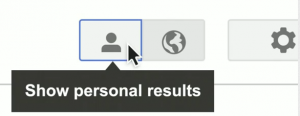Joe Fresh, a clothing line launched by Superstore, has been relatively successful at distinguishing itself from the “cheap and mediocre” image perceived of Superstore. When the brand first launched in 2006, few expected it to expand globally and as noted in my classmate, Diou Cao’s blog, many perceived it as a low-end, mass marketed clothing line. However, I believe that the concerns noted in Diou Cao’s blog post regarding the perceived “cheap and mediocre” image are obstacles that the brand has overcome already.
Joe Fresh has been distancing itself from Superstore physically and metaphorically by changing the “place” element in its marketing mix. They have opened independent, stand-alone clothing stores located in popular shopping districts, rather than in Superstore locations. In Vancouver, there is a store located on Granville St., near high-end, luxury stores such as Holt Renfrew. In addition, the brand has successfully expanded to the United States to affluent neighbourhoods in the Hamptons, where shoppers are unlikely to know about the Canadian grocery giant, Superstore. Thus, consumers are less likely to perceive the clothing as a low-end, widely accessible brand.
 Most importantly, the choice of location reflects the level of prestige that Joe Fresh is trying to achieve and further cements the brand as a upper middle-class clothing retailer. The head designer, Joe Mimran, was one of the co-founders of the international, high-end fashion company, Club Monaco. On March 30, 2012, Joe Fresh opened its flagship store on the prestigious Fifth Avenue in New York and hired the award-winning interior design firm, Burdifilek, to design and renovate the store.
Most importantly, the choice of location reflects the level of prestige that Joe Fresh is trying to achieve and further cements the brand as a upper middle-class clothing retailer. The head designer, Joe Mimran, was one of the co-founders of the international, high-end fashion company, Club Monaco. On March 30, 2012, Joe Fresh opened its flagship store on the prestigious Fifth Avenue in New York and hired the award-winning interior design firm, Burdifilek, to design and renovate the store.
 The overall store design and furnishings reflect Joe Fresh’s minimalist and clean-cut designs and provide a sharp contrast to the collection’s bold and bright colour palette. There are custom fixtures and finishes in matte white, blackened steel and clear acrylic to create the classically modern look represented by the brand. The opening of this high-profile store has proved to be a major accomplishment for Joe Fresh. Since its launch in Loblaw stores, Joe Fresh has come a long way in establishing itself as an independent brand by understanding the importance of location and distribution.
The overall store design and furnishings reflect Joe Fresh’s minimalist and clean-cut designs and provide a sharp contrast to the collection’s bold and bright colour palette. There are custom fixtures and finishes in matte white, blackened steel and clear acrylic to create the classically modern look represented by the brand. The opening of this high-profile store has proved to be a major accomplishment for Joe Fresh. Since its launch in Loblaw stores, Joe Fresh has come a long way in establishing itself as an independent brand by understanding the importance of location and distribution.



